By Kirby Vickery from the July 2016 Edition
Somewhere high in the central Mexico Mountains, almost on the slopes of the Volcano De Colima itself, four 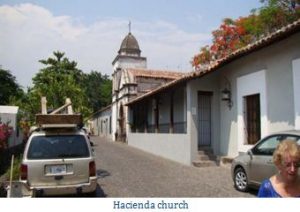 shimmering disturbances in the air could barely be seen. They were floating over an ancient path which could have been a long and forgotten ‘road’ from what is now Mexico City. Their general direction was toward Colima through Comala. If you held still, you could hear from the largest of the forms, a voice speaking in the ancient Nahuatl.
shimmering disturbances in the air could barely be seen. They were floating over an ancient path which could have been a long and forgotten ‘road’ from what is now Mexico City. Their general direction was toward Colima through Comala. If you held still, you could hear from the largest of the forms, a voice speaking in the ancient Nahuatl.
“Citlali (Star), you were my oldest child and my only son. This means that you would have taken over my business one day and it is still important for you to know this city in which I traded in copper. Mezthi (Moon), under the Spanish rule, you would have been allowed to assist Citlali and increase our profits. But, right now I need you to look after your little sister, Ihuicatl (Sky) who may yet grow to benefit you both.
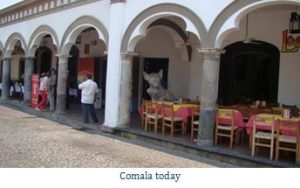 “Remember that I was Coyotl (Coyote) and had risen to the rank of an Aztec Achcauhtli (Leader) during the last of three attempts by our people to conquer this area we call Ajuchillan which means The Valley of the Flowers. The Spanish called this place the city of Comala which means the city of ‘Comals.’ You see, children, a Comal is nothing more than a small, round or oval, flat, iron or baked clay cooking platter. Some say this was the city which developed the comal for all of Mexico to fry the ground maize (corn) to make tortillas. And I know you liked those. Don’t you Citali?
“Remember that I was Coyotl (Coyote) and had risen to the rank of an Aztec Achcauhtli (Leader) during the last of three attempts by our people to conquer this area we call Ajuchillan which means The Valley of the Flowers. The Spanish called this place the city of Comala which means the city of ‘Comals.’ You see, children, a Comal is nothing more than a small, round or oval, flat, iron or baked clay cooking platter. Some say this was the city which developed the comal for all of Mexico to fry the ground maize (corn) to make tortillas. And I know you liked those. Don’t you Citali?
“Montezuma wanted this area and this city because their craftsmanship with most metals was far superior to anywhere else in the Aztec empire. This is probably why we Aztecs were unable to win any battles especially after the licking we got in the year the Spanish call 1479. I can tell you that it was their mastery of creating the edges on their copper axes, swords and lances that kept us from winning. Our family wasn’t 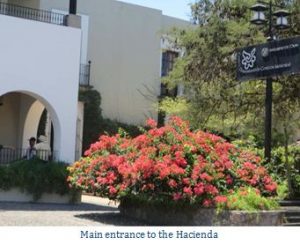 spared from the sicknesses the Spanish brought. Although I had lost my position in the army, I was able to establish our family as metal merchants when the plague and small pox hit and wiped out a large part of our population.
spared from the sicknesses the Spanish brought. Although I had lost my position in the army, I was able to establish our family as metal merchants when the plague and small pox hit and wiped out a large part of our population.
“The Ajuchillan was settled by the Olmec, Nahua, Toltec and later the Chechemece. They formed a society called the Purépechas people. Their King just gave the entire area to the Spaniards in 1525 so they would never be overrun by Montezuma. The problem with that was the Spanish were more ruthless than us Aztecs and demanded more tribute than we did, too. But the die was cast even with the Purépecha’s, Princess Eréndira, leading her people against the conquistador Cristóbal de Olid in 1529-30 when she was only 16. How about that Mezthi? Think you could do that? Ha! Ihuccatl just told me that she could, maybe in our next lives, my Sweet Flower.
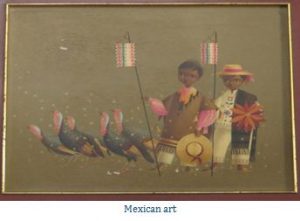 “With the advent of Hernando Cortez and his Spanish Rule, through to Modern times and several European rulers to include major wars and revolutions even with the United States, Comala’s legacy has grown. The entire area was declared a National Monument by the Mexican Government in 2002 in a successful attempt to increase tourism. Of course being by one of Mexico’s active volcanoes doesn’t hurt either. Today Comala boasts of a town square named after Benito Juarez, and it has benches designed and built by Alejandro Rangel Hidalgo, and restaurants and shops which feature the sale of the Famous Mexican Ceremonial masks.
“With the advent of Hernando Cortez and his Spanish Rule, through to Modern times and several European rulers to include major wars and revolutions even with the United States, Comala’s legacy has grown. The entire area was declared a National Monument by the Mexican Government in 2002 in a successful attempt to increase tourism. Of course being by one of Mexico’s active volcanoes doesn’t hurt either. Today Comala boasts of a town square named after Benito Juarez, and it has benches designed and built by Alejandro Rangel Hidalgo, and restaurants and shops which feature the sale of the Famous Mexican Ceremonial masks.
“Alejandro Rangel Hidalgo inherited a large estate just outside of town and filled it with his own art which is 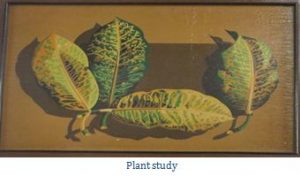 portrayed today along with the furniture he designed.
portrayed today along with the furniture he designed.
He was the artist that UNICEF contracted to create Mexican Christmas scenes on their Christmas cards during the 1960’s. A visit to the hacienda which he turned over to the University of Colima as an art education center will show you a more complex and dynamic designer of articles ranging from the very walls of the hacienda itself to the furniture and art placed within. When we get to the Hacienda, Mezthi, please be careful when you walk around. At times there are art student classes everywhere. When the Hildalgo family owned the property, they farmed it successfully and in its growth it created its own little village and the gardens are just wonderful.
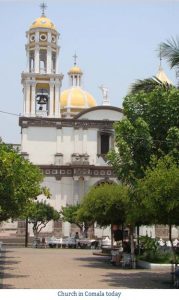 “Now, my children, it has been in recent years that the population has fallen off a little and the town has taken measures to attract a larger tourist trade. I told you about the ceremonial masks. I haven’t told you what the town did in 1961. They painted their entire village white figuring this would attract people to the town. The problem with that was the paint reflected only too well and they started to complain about it. The government decided to help and hired a contractor that developed a non-glare type white paint which has become known as ‘Comala White.’ The contractor stepped in and re painted everything for them to give the ‘village’ look. Today you will find a house here and there which has different bright colors. But overall, the city has kept its ‘village’ look which goes with the feel of a small community at the base of that active volcano that has become a jumping off place for all sorts of Ornate back wall of the Hacienda outdoor activities.
“Now, my children, it has been in recent years that the population has fallen off a little and the town has taken measures to attract a larger tourist trade. I told you about the ceremonial masks. I haven’t told you what the town did in 1961. They painted their entire village white figuring this would attract people to the town. The problem with that was the paint reflected only too well and they started to complain about it. The government decided to help and hired a contractor that developed a non-glare type white paint which has become known as ‘Comala White.’ The contractor stepped in and re painted everything for them to give the ‘village’ look. Today you will find a house here and there which has different bright colors. But overall, the city has kept its ‘village’ look which goes with the feel of a small community at the base of that active volcano that has become a jumping off place for all sorts of Ornate back wall of the Hacienda outdoor activities.
“And now, my children, we have to get down into the center of town for the festivities there in the town square before we peruse the metal working shops to see if any would sell to a family of Aztec ghosts. It’s better than haunting someone’s house, don’t you think?”
Download the full edition or view it online
—
Kirby was born in a little burg just south of El Paso, Texas called Fabens. As he understand it, they we were passing through. His history reads like a road atlas. By the time he started school, he had lived in five places in two states. By the time he started high school, that list went to five states, four countries on three continents. Then he joined the Air Force after high school and one year of college and spent 23 years stationed in eleven or twelve places and traveled all over the place doing administrative, security, and electronic things. His final stay was being in charge of Air Force Recruiting in San Diego, Imperial, and Yuma counties. Upon retirement he went back to New England as a Quality Assurance Manager in electronics manufacturing before he was moved to Production Manager for the company’s Mexico operations. He moved to the Phoenix area and finally got his education and ended up teaching. He parted with the university and moved to Whidbey Island, Washington where he was introduced to Manzanillo, Mexico. It was there that he started to publish his monthly article for the Manzanillo Sun. He currently reside in Coupeville, WA, Edmonton, AB, and Manzanillo, Colima, Mexico, depending on whose having what medical problems and the time of year. His time is spent dieting, writing his second book, various articles and short stories, and sightseeing Canada, although that seems to be limited in the winter up there.




